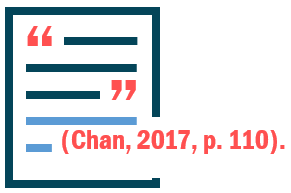Online Tutorial on Academic Integrity on Learn@PolyU
A compulsory tutorial for students taking the subject of the Freshman Seminar.
ELC's Centre for Independent Language Learning (CILL) offers information about quoting, summarising, paraphrasing, in-text and end-of-text referencing.
A quick guide to help you do plagiarism-free work (prepared by OUS). More info: OUS Resources on Academic Integrity
| 2766-6863 | |
| 2766-6863 (service hours) | |
| Online Form | |
| Contact your Faculty Librarians on in-depth research questions |
Academic Integrity refers to the honest and ethical manner in which academic work is done, whether it is an assignment, an examination, an oral presentation, or a research project or report. Plagiarism is a key component in academic integrity.
Plagiarism is defined as using other people’s work and/or other sources without giving proper acknowledgement of the sources. Plagiarism also occurs when Generative AI output is used when it is explicitly disallowed in an assessment.
Citation is the key to avoiding plagiarism, but that doesn’t mean you can simply copy-paste from others’ works and/or other sources as long as you cite the source. To avoid plagiarism, here are two ways:
 |
Paraphrase + CiteParaphrasing means to rewrite the sentence from a source in your own words without changing the meaning of the sentence. You still need to cite the source properly. |
 |
Direct Quote + CiteQuoting, or direct quoting, means to copy the exact words of a sentence from a source. You need to put the copied words in quotation marks " " and cite the source properly. |
Watch the videos below to learn more about plagiarism, paraphrasing and quoting. Refer to Citation Guides by Subject to learn how to cite in your research discipline.
Source: ProQuest Research Companion
 |
When in doubt, always cite! |
 |
Keep a list of all the reference materials you consulted and of course make notes (e.g. which are quotes and which are your own words) |
 |
Use a reference management tool (e.g. EndNote) to help you organize references and make citations |
 |
Have better time management - Plan your work earlier! |
 |
Check with your supervisor or instructor the referencing guidelines for your assignment or essay |
Many students may be confused about these two terms: plagiarism and copyright infringement. This is because many cases of plagiarism are also copyright infringement.
Copyright infringement refers to unauthorized or prohibited use of works covered by copyright law. In simple words, to use another person’s work without permission.
If you submit a photograph taken by someone else, but using your own name, you actually commit both plagiarism and copyright infringement, because you are passing off another person’s work as your own, and at the same time, use the work without seeking that person’s permission.
Check out the guides below to learn more about what is copyright and how to deal with copyright issues in the context of teaching and learning, as well as publishing.